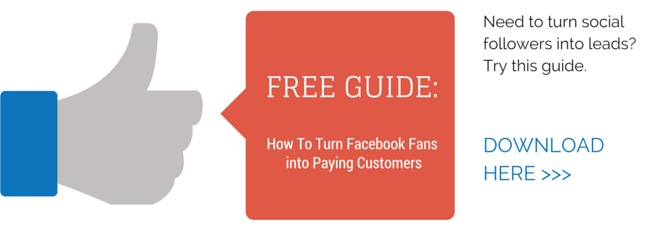- Jul 1, 2014
- By Cleriti Blogger
- In Marketing Strategy and Planning, Content Marketing
Does It Hurt Your Marketing to Pay to Promote Your Social Media?

 In a perfect world, everything you post on social media would go viral. In such a universe, where your organic reach was massive and followers did your content promotion for you, there would be no need for paid advertising on social media. Unfortunately, nobody lives in this world, which means you might be in a position where you have to consider paying to promote your social media sites.
In a perfect world, everything you post on social media would go viral. In such a universe, where your organic reach was massive and followers did your content promotion for you, there would be no need for paid advertising on social media. Unfortunately, nobody lives in this world, which means you might be in a position where you have to consider paying to promote your social media sites.
This, in no way, makes you less of a good marketer. And it does fit in with the tenets of inbound marketing. People will still notice the great content you have and will become active participants in your future promotional efforts. Paying for advertising is just a way to get your name out there. Once people see what you’re all about, your content will take care of the rest.
If you’re going to go all-in with social media advertising, which is the best way to go about your advertising? Which site gives you the best bang for your buck? Here’s a look at some of the more popular social media sites out there and how they shake out in terms of digital marketing ROI.
We all know that Facebook is the most popular social media site in the world. It has the biggest reach and the most active users. But is it the best avenue for your advertising?
Sidebar Ads
The first ads on Facebook were ads that appeared on the side of your news feed. These ads are still around and kicking, but haven’t exactly given marketers the return they expected, given Facebook’s massive reach. Sidebar ads are easily ignored on desktops and aren’t even visible to smartphone users; even the promise of bigger sidebar ads, which were recently rolled out, doesn’t inspire much confidence.
Promoted Ads
Promoted posts, on the other hand, are a different story. Whereas sidebar ads don’t do anything for mobile users, a promoted post appears right in the middle of a viewer’s feed, forcing a mobile browser to take notice. This gives a more organic feel on any device, and that goes double for smartphones and tablets. Facebook allows you to pay a little more to link directly to a smartphone app store, enabling viewers to download your app right then and there. It’s a tremendous opportunity if you’re pushing an app; even if you’re not, a promoted post is infinitely more visible and actionable than a desktop-only ad.
Like Facebook’s promoted posts, the sponsored ads on Twitter give the appearance of organic placement. Sponsored tweets look just the same as every other tweet, with the only difference being a small indicator showing that you paid to advertise on Twitter.
The main difference between advertising on Twitter and advertising other platforms, such as Facebook, is that you only have 140 characters to get your point across. Your only real options are to promote your brand as a whole or advertise a promotion that’s going on in your online store. If you simply want to remind customers of who you are or tell people about a sale, Twitter’s not a bad deal. But if you want a little more space to show what you’re all about and what you can offer customers, which is key for inbound marketing, you might want to look elsewhere.
LinkedIn isn’t a daily visit for most people, and it certainly isn’t as widely visited as Facebook or Twitter. It is, however, the biggest site for B2B marketing. If your main focus is the B2B market, listen up.
LinkedIn makes up for its lack of mainstream reach by giving a great deal of credibility to every company that advertises on the site. On LinkedIn, you know exactly who you’re dealing with, and you can easily gain access to real people that work for the company with which you’re trying to establish a relationship. Every company page is a potential selling point; even if the individual pages are nothing special from a visual perspective, they carry a lot of weight with potential customers.
In terms of paid advertising, promoted posts tend to stand out more because there’s less clutter in the average user’s feed. This means more eyeballs are on your posts, giving you a greater chance for conversion. Furthermore, since LinkedIn isn’t as informal as other social media sites, people automatically take your posts more seriously. That gives you the opportunity to put your best foot forward and really turn some heads.
Each company has different needs, and there’s no one-size-fits-all solution that works for every business. However, each social media’s paid advertising medium has its merits. In theory, a company could benefit from using all of these sites. If you only want to target one, look at your company’s needs and figure out where you need to stand out in the marketplace. If you want to boost your B2B business, go with LinkedIn and don’t look back. If you want to target consumers about a specific promotion and you can get your point across quickly, use Twitter. If you want to show a little more sizzle and begin relationships in an inbound marketing fashion, give Facebook’s promoted posts a shot.





